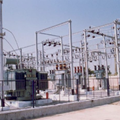The Impacts of the Contemporary Drought in Syria and Its Implications for the Conflict
Executive Summary
The report is available in Arabic
Since the latter months of 2020, Syria has yet again fallen into a severe drought. This new drought is occurring in a country whose agricultural capacity has already been decimated by decades of agricultural and water misgovernance, as well as an 11-year war, making it less capable of coping with a drought than at any point in its modern history. We analyse various drought and agricultural stress-related satellite and survey data to examine the agricultural situation. A critical finding is that even though Syria experienced higher than average rainfall across the vast majority of the country this past year (compared to the severely lacking rainfall of the year previous), this had no visible effect on improving the health of crop land. This illustrates that Syria’s crop land might have hit a tipping point due to the long-standing agricultural misgovernance, to such a degree that it is unable, or at least significantly struggling, to bounce back from periods of insufficient rainfall.
To read the full file, see the file below
We then outline the economic impacts Syria is experiencing and is set to experience as a result: domestic bidding wars for scarce agricultural output; further declining foreign currency reserves in the wake of exports disappearing; food prices skyrocketing; and agricultural labour market activity declining. Next, we discuss the dire humanitarian catastrophe that this drought is engendering and exacerbating – already critically high food prices increasing further due to a decreased food supply which cannot be supplemented by imports due to insufficient foreign currency reserves and significantly declining foreign aid. One alarming finding of the report is that Syria would need to spend 16-18% of its 2022 budget just to fill the wheat deficit it is currently facing. Syria has virtually no foreign currency; reserves attempting to import this quantity of wheat would be a critical stressor on the country’s already reeling economy.
Finally, we examine the likelihood that some of the potential effects of the drought will in turn affect the nature of the conflict. We argue that there is unlikely to be much rural-urban migration or anti-regime protests, and little chance that the Autonomous Administration of North and East Syria (AANES) will gain increased strength as a result of being the prime bread-producing region. However, after conducting an original collation and analysis of data regarding the effect of the current drought on the sustainability of agricultural livelihoods in Syria, we find that an immense number of agricultural workers are set to become disenfranchised as a result of the drought. For instance, around three-quarters of resident communities and around one-quarter of IDP communities in AA territory reported agriculture as a source of livelihoods. We then survey the nature of current militant operations and violence in the country, concluding that these operations might absorb a significant number of these disenfranchised workers, thus causing tangible changes in the intensity of the violence and criminal activity.
1.A Looming Crisis?
1.1 Assessing the Severity of the Drought
The toll of the Syrian War on the nation’s agriculture has been devastating. The average annual amount of wheat production between 2006 and 2010 was 3.7 million (metric) tonnes,1 but this declined following the uprising to 2.7 million tonnes between 2011 and 2015, and then to just 1.8 million tonnes between 2015 and 2019.2 The latest nationwide statistics for livestock levels are from 2018, by which point both cattle and sheep numbers were down by 40%, goat numbers were down 29%, and poultry numbers were down by 55%, all relative to 2010.3





